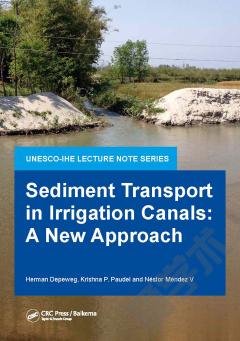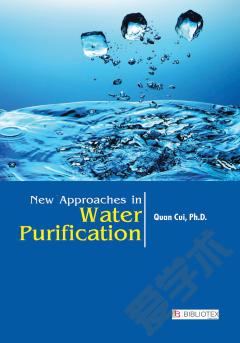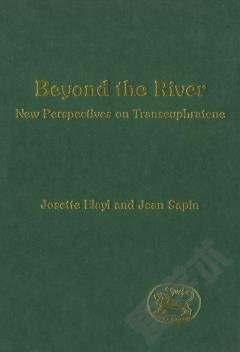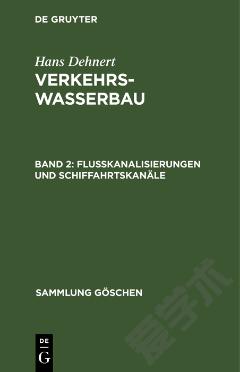Sediment Transport in Irrigation Canals —— A New Approach
----- 灌溉渠道泥沙输移的新途径
LIST OF FIGURES LIST OF TABLES PREFACE 1 INTRODUCTION 2 OPEN CHANNEL FLOW 2.1 Introduction 2.2 Flow types and characteristics 2.3 Geometry 2.4 Basic hydraulic principles 2.5 Velocity distribution 2.6 Uniform flow 2.7 Non-uniform steady flow 2.8 Some general aspects of unsteady flow 2.9 Basic differential equations for gradually varied unsteady flow 2.10 Solution of the de St. Venant equations 2.11 Rectangular channels and the method of characteristics 3 SEDIMENT PROPERTIES 3.1 Introduction 3.2 Density and porosity 3.3 Size and size distribution 3.4 Shape 3.5 Fall velocity 3.6 Characteristic dimensionless parameters 4 DESIGN CRITERIA FOR IRRIGATION CANALS 4.1 Introduction 4.2 Flow control systems 4.2.1 Upstream control 4.2.2 Downstream control 4.3 The role of sediment transport in the design of irrigation canals 4.3.1 Regime method 4.3.2 Tractive force method 4.3.3 Permissible velocity method 4.3.4 Rational method 4.3.5 Final comments 4.4 Appurtenant canal structures 4.4.1 Irrigation structures 4.4.2 Main hydraulic principles for irrigation structures 4.4.3 Hydraulics for some irrigation structures 4.4.4 General remarks 5 SEDIMENT TRANSPORT CONCEPTS 5.1 Introduction 5.2 Friction factor predictors 5.2.1 Introduction 5.2.2 Bed form development 5.2.3 Effects of grains and bed forms on the roughness of the bed 5.2.4 Roughness of the side slopes 5.2.5 Equivalent roughness for non-wide irrigation canals 5.2.6 Comparison of the equivalent roughness predictors in trapezoidal canals 5.2.7 Prediction of composite roughness in a rectangular canal 5.2.8 Effect of bed forms on the flow resistance 5.2.9 Determination of the friction factor 5.3 Governing equations for sediment transport 5.3.1 Introduction 5.3.2 Initiation of sediment movement 5.3.3 Sediment transport in non-wide canals 5.3.4 Effects of the canal geometry and flow characteristics on the sediment transport 5.3.5 Velocity distribution in a trapezoidal canal 5.3.6 Exponent of the velocity in the sediment transport predictors 5.3.7 Correction factor for the prediction of the total sediment transport 5.3.8 Predictability of the predictors with the correction factor 5.3.9 Sediment transport in non-equilibrium conditions 5.4 Morphological changes of the bottom level 5.4.1 The modified Lax method 5.4.2 Sediment movement 5.5 Conclusions 6 SETRIC, A MATHEMATICAL MODEL FOR SEDIMENT TRANSPORT IN IRRIGATION CANALS 6.1 Upstream controlled irrigation systems 6.1.1 Introduction 6.1.2 Water flow equations 6.1.3 Sediment transport equations 6.1.4 General description of the mathematical model 6.1.5 Input and output data 6.2 Downstream controlled irrigation systems 6.2.1 Background 6.2.2 Downstream control considerations 6.2.3 Aspects of the downstream control module 6.2.4 Input and output data 6.3 Conclusions 7 THE SEDIMENT TRANSPORT MODEL AND ITS APPLICATIONS 7.1 Introduction 7.2 Description of the hydraulic and sediment characteristics for the given examples 7.3 Case 1 Changes in the discharge at the headworks 7.4 Case 2 Changes in the incoming sediment load 7.5 Case 3 Controlled sediment deposition 7.6 Case 4 Flow control structures 7.7 Case 5 Maintenance activities 7.8 Case 6 Management activities 7.9 Case 7 Effect of the design of control structures on the hydraulic behaviour and sediment transport 7.10 Review REFERENCES SYMBOLS APPENDIX A METHODS TO ESTIMATE THE TOTAL SEDIMENT TRANSPORT CAPACITY IN IRRIGATION CANALS A.1 Introduction A.2 Ackers and White method A.3 Brownlie method A.4 Engelund and Hansen method A.5 Van Rijn method A.6 Yang Method APPENDIX B METHODS TO PREDICT THE FRICTION FACTOR B.1 Van Rijn B.2 Brownlie B.3 White, Paris and Bettess B.4 Engelund APPENDIX C HYDRAULIC DESIGN OF IRRIGATION CANALS C.1 Introduction C.2 Alignment of an irrigation canal C.3 Water levels C.4 Earthwork C.5 Design of irrigation canals C.6 Boundary shear stresses C.7 Sediment transport criteria C.8 Transport of the bed material C.9 Final remarks C.10 Computer aided design of canals APPENDIX D DESCRIPTION OF THE MAIN ASPECTS OF THE REGIME THEORY D Some regime considerations D.1 Sediments D.2 Maturing of canals D.3 Slope adjustments D.4 Diversion of the sediment D.5 Maintenance aspects D.6 Flow capacity D.7 Design considerations APPENDIX E GLOSSARY RELATED TO SEDIMENT TRANSPORT APPENDIX F FLOW DIAGRAMS SUBJECT INDEX
{{comment.content}}








 京公网安备 11010802027623号
京公网安备 11010802027623号